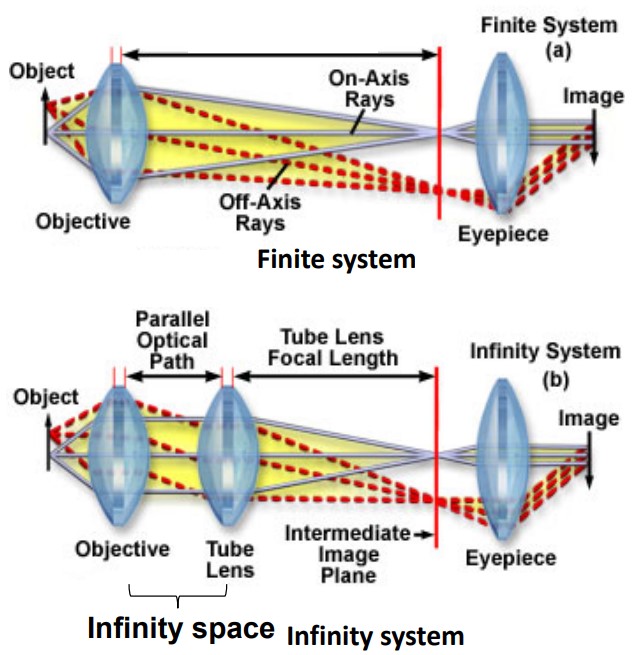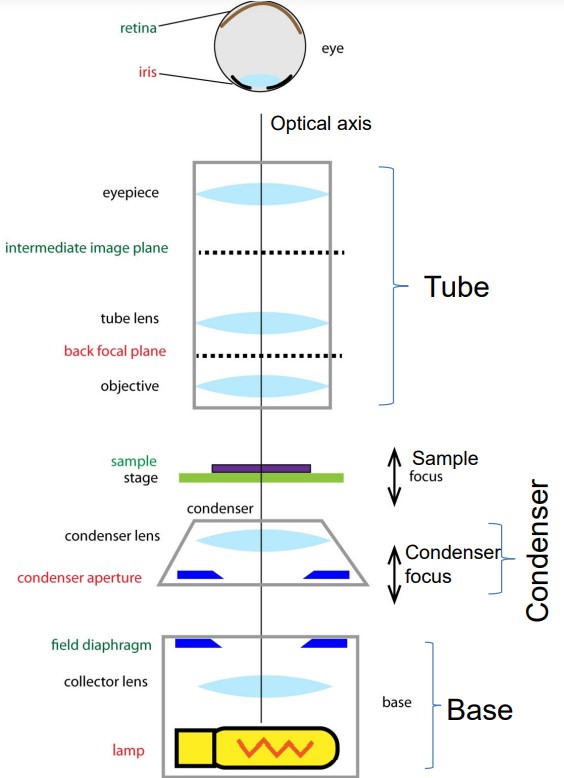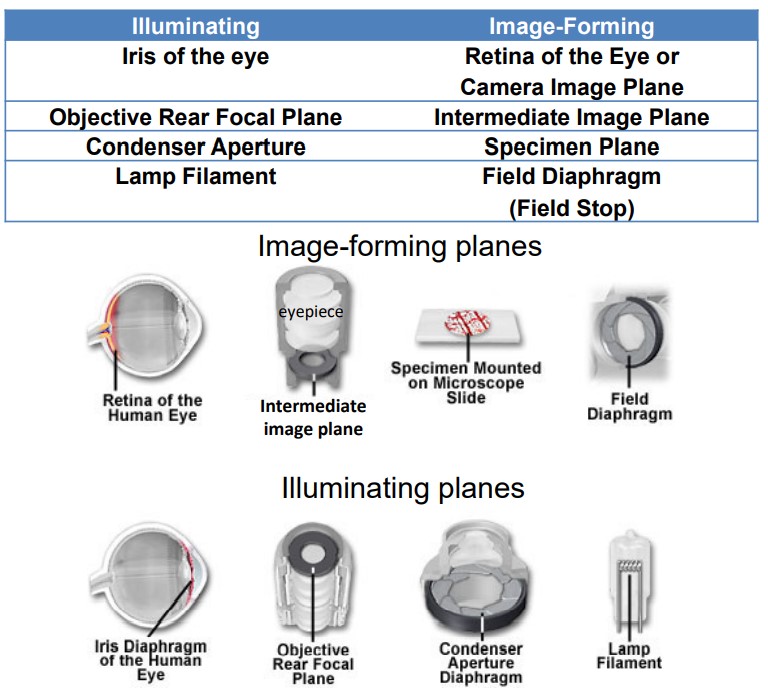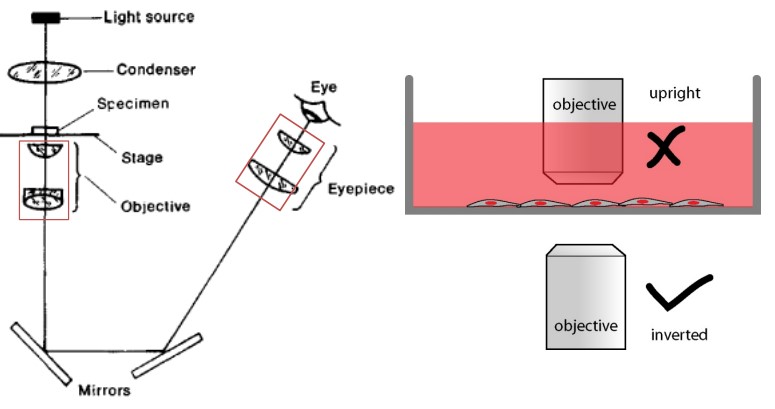2.6 Microscope Principles and Parts
2.6.1 Finite and Infinite Systems

Figure 2.21: Differences Between Finite and Infinite Systems
In a finite system, a real image is formed in front of the eyepiece (which acts as a magnifying glass). The virtual image formed by the eyepiece is then looked at by the user.
In an infinite system2, the object of interest is left at the focal point (and many optical devices can be placed in the infinity space). The tube lens generates a real image at the intermediate image plane and the eyepiece magnifies it. Infinite systems also use collimated light and tube lens and the eyepiece form a telescope.
2.6.2 Parts of a Microscope

Figure 2.22: Parts of a Standard Compound Microscope
The aperture of a microscope is responsible for controlling the amount of light that passes through the lens. The field diaphragm controls the total amount of light generated.
Microscopes too are also infinite systems; they also contain a prism to alter the direction of light.
2.6.3 Optical Trains and Conjugate Plane Sets

Figure 2.23: Schematic of a Compound Microscope
The optical train describes the passage by which light travels along the optical axis.
The red text represent illuminating planes (i.e., how bright the image appears) and the green image-forming planes (i.e., where the images are formed).

Figure 2.24: Possible Combinations of Conjugates Planes
The conjugate planes form images of one another and visually overlap when viewed; they are a set of illuminating planes and image-forming planes (that are determined via Kohler Illumination).
Think of this as a telescope within a microscope.↩︎

